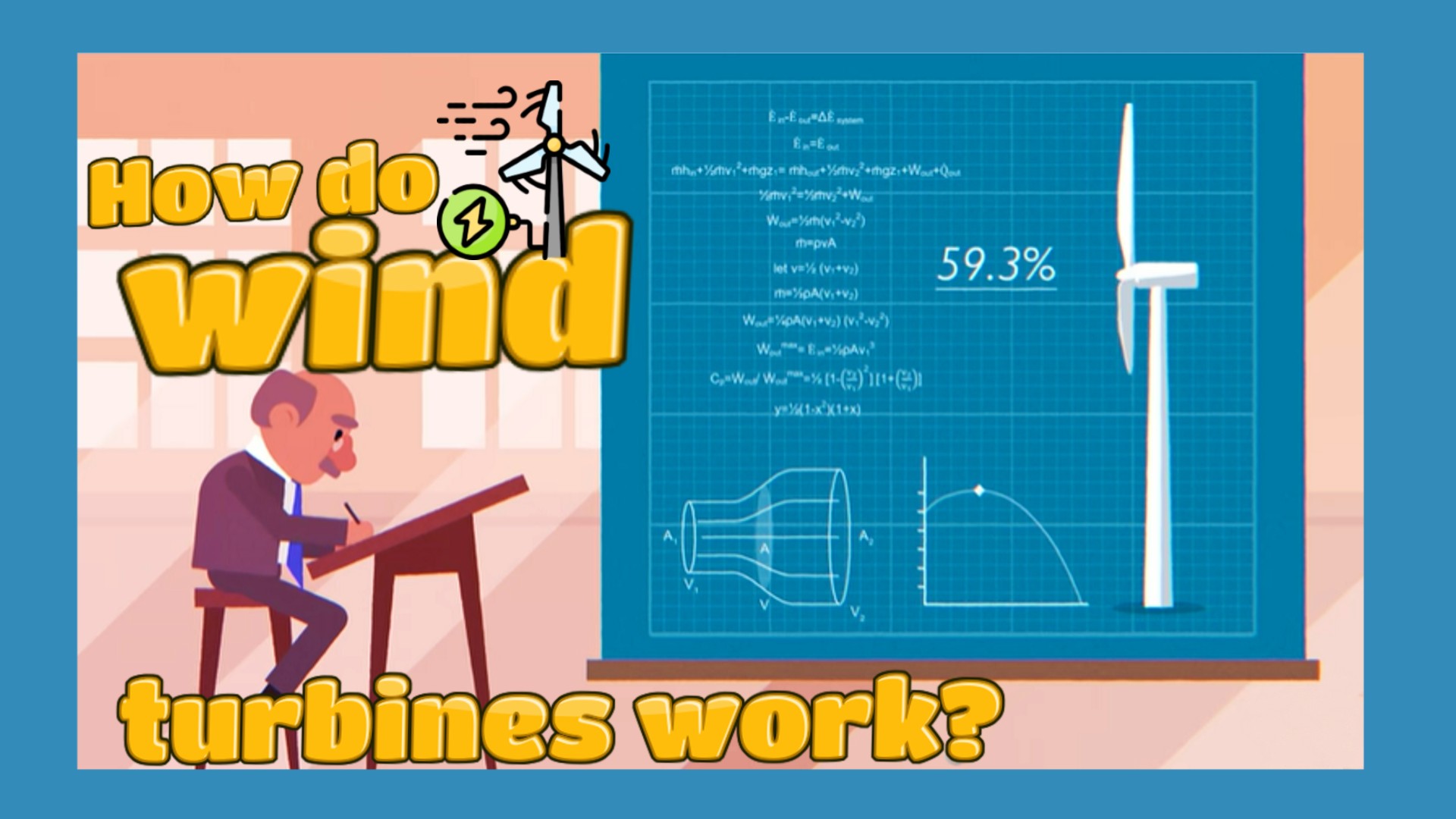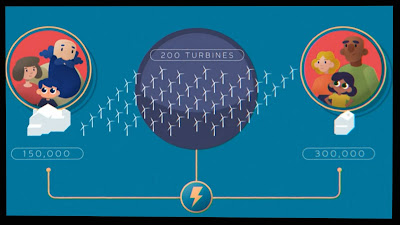Every 24 hours, wind generates enough kinetic energy to produce roughly 35 times more electricity than humanity uses each day. And unlike coal or oil, this resource is totally renewed each day. So how can we harness this incredible amount of energy, and is it possible to create a world powered entirely by wind?
The basic principle of wind energy is simple: A series of sails or blades mounted around a rotor catch the wind and translate its kinetic energy into rotational energy, traditional windmills use that rotational energy to grind wheat or pump water, but in modern wind turbines, it turns a generator that creates electricity, this conversion from wind to rotational energy to electricity has defined wind turbines since their invention in the late 19th century. And there are three primary factors that determine just how much energy they can produce: the size and orientation of the blades, the blade’s aerodynamic design, and the amount of wind turning the rotor.
First up, blade orientation, Wind turbines can be designed with their rotor on a vertical axis or a horizontal axis, Vertical blades can pick up wind coming from any direction, but with much less efficiency than horizontal axis rotors, Horizontal designs allow blades to capture the wind’s full force by tracking the wind’s direction and turning to face it. This turning process is called yawing, and older windmills achieved it through manual monitoring.
Today, wind sensors and computer systems automatically adjust the blades with expert precision to capture as much energy as possible. Outside rotor orientation, the blades themselves need to be shaped to maximize efficiency. While early designs used flat blades, modern blades are curved like airplane wings. Wind travels faster over the curved surface, creating a low-pressure pocket above the blade that forces it upwards. Since the amount of lift depends on the angle at which the wind is moving relative to the blade, modern blades also incorporate a twist, optimizing how much of the blade can cut into the wind.
Made of fiberglass and resin layers, these blades are strong enough to operate through rain, lightning, and blistering sunlight for over 20 years. Even with aerodynamic blades and a horizontal rotor, a wind turbine can only capture wind if it's in a windy environment. Wind speeds typically increase the higher into the atmosphere you travel. So today, most turbines are well over 100 meters tall, with equally large rotor diameters. A turbine of this height and size can capture a huge amount of wind, generating enough electricity every year to power 750 American homes. A wind farm of 200 similarly sized turbines could power over 150,000 American homes— or twice as many European homes—for an entire year. Offshore wind farms contain an even greater number of even larger turbines. In 2019, the largest wind turbine ever built began operating off the coast of the Netherlands.
With a rotor diameter of 220 meters, just one of these turbines can meet the annual power needs of 16,000 European households. Despite its amazing potential, wind energy still faces challenges. Wind may be a free and unlimited fuel, but no matter how large or efficient a turbine is there's a mathematical limit to how much wind it can convert into electricity. German physicist Albert Betz calculated that since some wind must remain to keep the blades spinning, a turbine can only ever capture 59.3% of the wind’s energy. Additionally, some people feel turbines disrupt natural scenery, and wind energy’s intermittent availability can make it difficult to integrate into electrical grids.
But even with these challenges, modern wind turbines have made wind energy the most efficient and inexpensive source of electricity. Wind turbines already provide essential energy for communities around the world. And for many farmers, hosting a wind turbinecan be a reliable source of additional income. With continued improvements in wind forecasting, electrical grid infrastructure and energy storage, wind power might blow away all our energy problems.
















No hay comentarios.:
Publicar un comentario